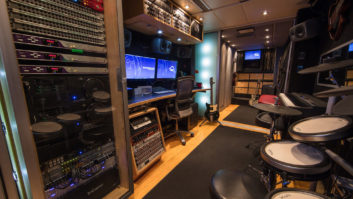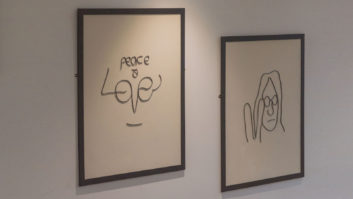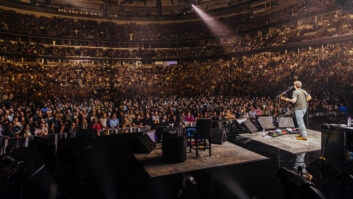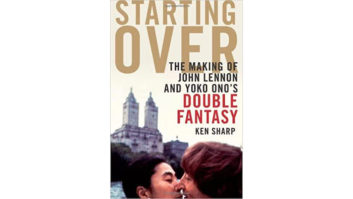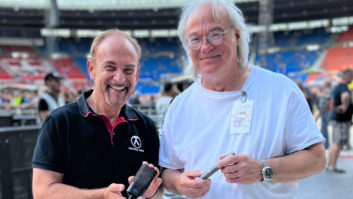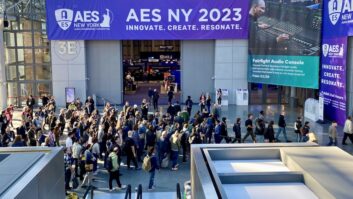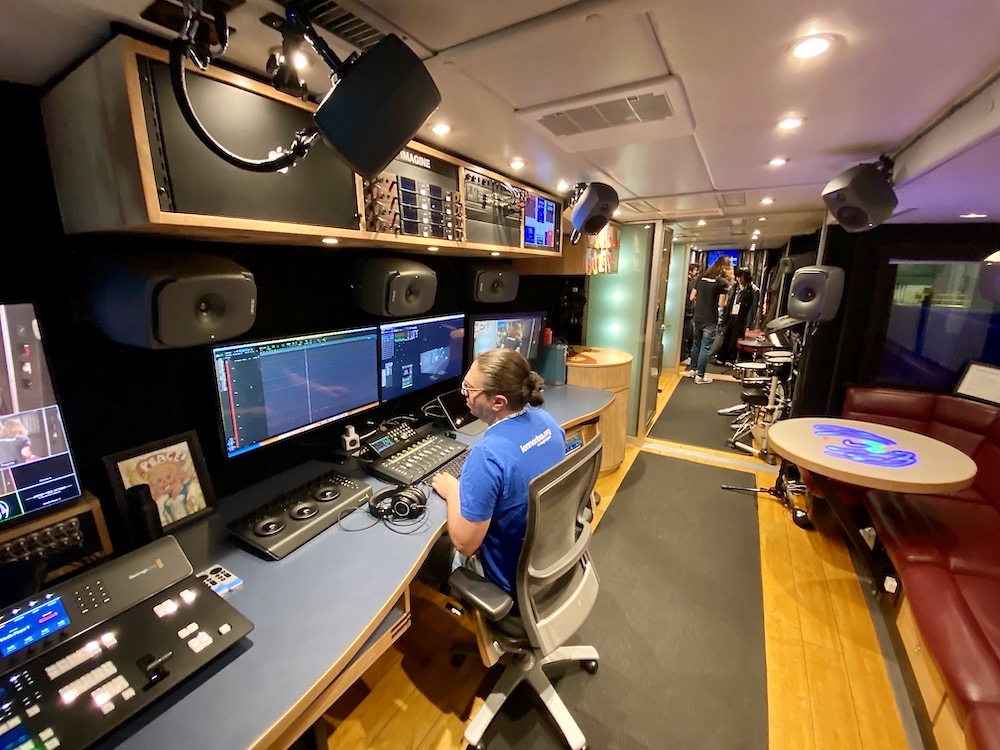
New York, NY (March 21, 2024)—Mobile recording studios are a cornerstone of the recording industry, but few have the style— or inspiring mission—of the John Lennon Educational Tour Bus. For more than a quarter century, the nonprofit Lennon Bus has circled the U.S. and Canada, making stops at high schools and colleges to help students create music. The experience isn’t a simple feelgood photo-op either; it’s an exciting eight-hour day where visitors come aboard to write, perform and produce an original song and music video from scratch.
Students come away from the experience not only with content, but also new skills. “It’s not just for people who are self-described musicians or creators,” says Brian Rothschild, who co-founded the Bus with Yoko Ono Lennon. “It’s increasingly a way to show young people tools that they can use to demonstrate their knowledge and communicate about almost any kind of topic. It’s been made possible over the years by a collection of great sponsors, and we go to a lot of underserved communities, taking the finest tools that the industry has to offer out to places where maybe they don’t get to see and experience that. It’s meant to inspire.”

The first Lennon Bus was built in 1998 as an offshoot of the annual John Lennon Songwriting Contest. While it was originally just a literal promotional vehicle for that year’s contest, the Bus quickly took on a life of its own. “It garnered a lot of enthusiasm,” admits Rothschild. “I couldn’t imagine taking it apart, and it became my life’s work and passion.” There’s been multiple Lennon Busses since then, along with a European edition that hit the road in 2013, all stocked with top-of-the-line gear provided by sponsors.
When visitors climb abord, they immediately step into a control room/lounge that centers around a brand-new Dolby Atmos 7.1.4 mix setup. Continuing through the bus, there’s another studio, which can be sealed off, and further back are an Audio-Technica mic locker, closets for lighting and mic stands, a bathroom and three bunks—necessary as a three-person crew travels in the bus for 10 months each year.
Building The Last Beatles Song
The Dolby Atmos mix system was installed last summer by bus partner Westlake Pro in Burbank, Calif., working in tandem with Jeff Sobel, chief technology officer for the Lennon Bus. “We already had a 5.1 Genelec monitor system, so we had 8341As and a sub for that,” says Sobel. “We used Dolby’s DARDT software, put in our room dimensions and monitors, and it said what the SPLs were going to be. One of our biggest constraints was the ceiling height—it’s pretty low, because it’s a bus—so we used Genelec 8328s that we could keep as close to the ceiling as possible to get the right height. Our mix room is also a traffic area where people enter and exit the bus, so we needed the speakers to be in the correct positions, but also still allow ingress and egress.”
The result is an Atmos mix rig that is assembled quickly every day: “The 5.1 setup that we started from was permanently affixed—we don’t take those speakers down for travel—but the Atmos height speakers detach. Our partner for that is Triad-Orbit, which makes great quick-release mounts that are also very sturdy; we installed their mounts in key positions, and the corresponding mounts are on the backs of the Genelec height monitors, so we can pop them into the mounts affixed to the ceiling. Our side-surrounds go on Triad-Orbit stands that we can set up by line of sight, which is a setting we developed when Bryan Pennington [Dolby senior field applications engineer] tuned the system. He confirmed the exact positioning and orientation to those speakers, so we just replicate that each time we set up.”
The Atmos system was installed just in time, as the bus took a detour from its usual travels to join up with Wu-Tang Clan’s fall tour. Throughout the journey, Wu-Tang’s RZA worked on A Ballet Through Mud, a new album he recorded with the Colorado Symphony Orchestra, developing Atmos mixes daily with lead mix engineer Pietro Rossi.
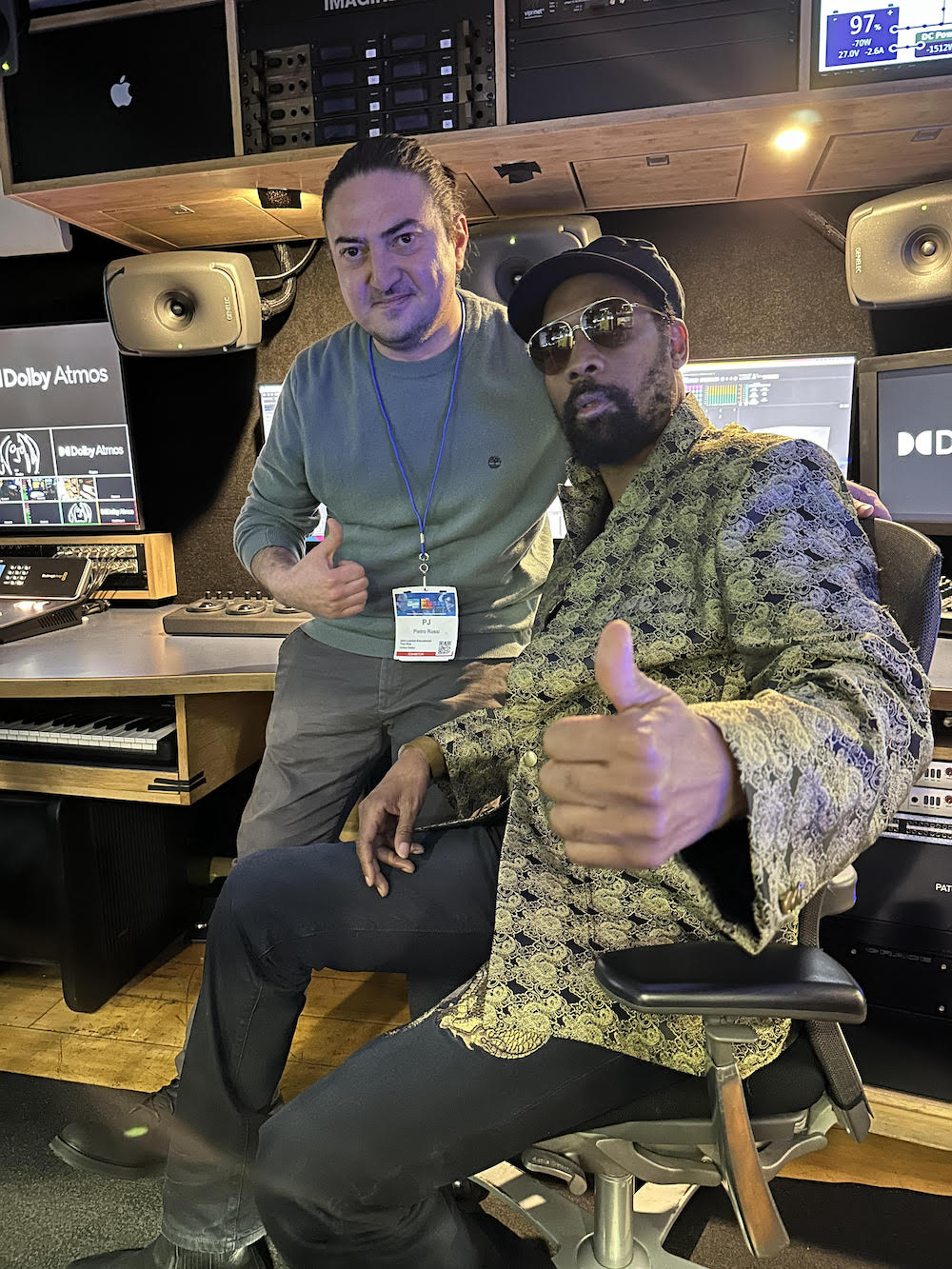
“That was a very interesting and challenging process,” says Rossi. “Pretty much every single day, we were in a different location, but we managed to edit and mix more than a song a day—the entire album—and get it approved by the artists, so it was challenging but very smooth. When they were done with the show on stage, they would come on the bus to check the mixes and revisions. We also had the chance to record some scratch vocals of some new tracks, so it was a very fruitful 10 days with them.”
Technology aboard the bus has kept up with the times, thanks to sponsors and partners like Apple, Avid, Solid State Logic, Apogee, Neutrik, Roland, Universal Audio, Flock Audio, Grace Design, Blackmagic Design and others.
There’s also sponsors for things visitors don’t see, such as Battle Born Batteries, which recently installed a next-generation, “greener” power solution. “We got rid of 1,500 pounds of old-fashioned batteries and put some solar panels on the roof,” says Rothschild. “Their lithium iron phosphate batteries have completely transformed our power situation.”
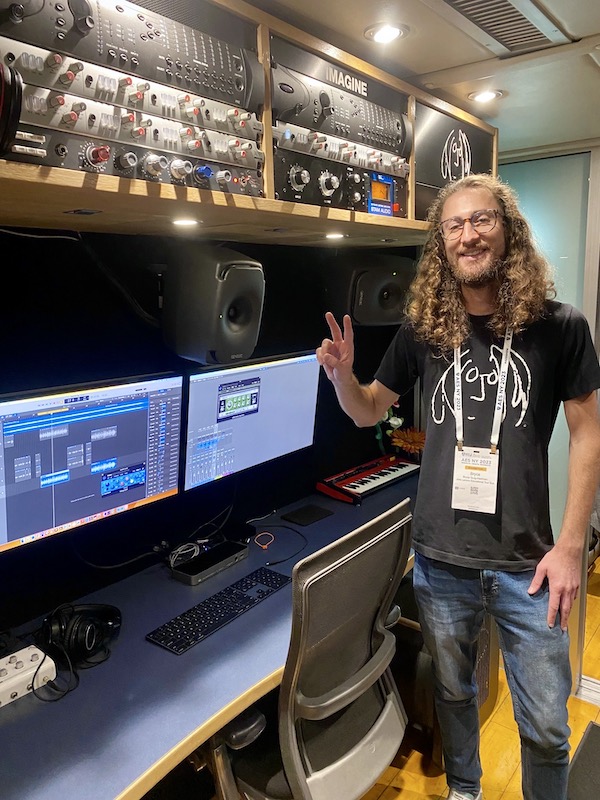
That power keeps the bus’s equipment running, of course. “The rear studio is where we do most of our tracking,” says Bryce Quig-Hartman, who traveled as a Lennon Bus engineer from 2013 to 2016 and is still connected to the organization. “Both studios are running Mac-based systems through the Apogee Symphony MkII, so we’ve got 16 channels up front, 24 in back, as well as 12 channels of SSL XLogic pres with Variable Harmonic Distortion to add a little bit of color there. For mics, we’ve got the Audio-Technica mic closet, so we have AT4050s, a 4047, a 4060 tube mic, plus we’ve got the Roland RD-2000 for keys, their V Drums, and Gibson guitars and bass.”
Hitting the road to work with new students every day isn’t for everyone, but it’s uniquely gratifying, says Quig-Hartman: “It takes a certain type of person. You have to be a good audio engineer, but it’s also a matter of ‘are you able to stay sane being on the road 10 months out of the year?’ Once you become a Lennon Bus engineer, you share a bond with everyone else who’s done it—you’re family at that point and it becomes a part of you, even afterward. You never leave the bus!”

